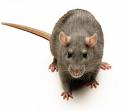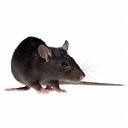



Rodent
Control.
Only main pests found to infest properties in the UK Listed

Norway rats live in close association with people. They burrow to make nests under buildings and other structures, beneath concrete slabs, along stream banks, around ponds, in garbage dumps, and at other locations where suitable food, water, and shelter are present. On farms they may inhabit barns, granaries, livestock buildings, silos, and kennels. In urban or suburban areas they live in and around residences, in cellars, warehouses, stores, slaughterhouses, docks, and in sewers. Although they can climb, Norway rats tend to inhabit the lower floors of multi-story buildings.
Food Habits: Norway rats will eat nearly any type of food. When given a choice, they select a nutritionally balanced diet, choosing fresh, wholesome items over stale or contaminated foods. They prefer cereal grains, meats and fish, nut, and some types of fruit. Rats require 1/2 to 1 ounce of water daily when feeding on dry foods but need less when moist foods are available. Food items in household garbage offer a fairly balanced diet and also satisfy their moisture needs.
Brown Rat
Rattus Norvegicus.
The Black Rat is a common long-tailed rodent of the genus Rattus (rats) in the subfamily Murinae (murine rodents). The species originated in tropical Asia and spread through the Near East inRoman times before reaching Europe by the 6th century and spreading with Europeans across the world. Today it is again largely confined to warmer areas, having been supplanted by the Brown Rat (Rattus norvegicus) in cooler regions.
Despite its name, it exhibits several colour forms. It is usually black to light brown in colour with a lighter underside. A typical rat will be 15–20 cm (5.9–7.9 in) long with a further 20 cm (7.9 in) of tail. It is nocturnal and omnivorous with a preference for grains and fruit. Compared to the Brown Rat, it is a poor swimmer, but more agile and a better climber, tending even to flee upwards. In a suitable environment it will breed throughout the year, with a female producing three to six litters of up to ten young. Females may regulate their production of offspring during times when food is scarce, throwing as few as only one litter a year. R. rattus lives for about 2–3 years. Social groups of up to sixty can be formed.
Black Rat
Rattus rattus
House mice live in and around homes, farms, commercial establishments, as well as in open fields and agricultural lands. The onset of cold weather each fall in temperate regions is said to cause mice to move into structures in search of shelter and food.
Food Habits: House mice eat many types of food but prefer seeds and grain. They are not hesitant to sample new foods and are considered "nibblers," sampling many kinds of items that may exist in their environment. Foods high in fat, protein, or sugar may be preferred even when grain and seed also are present. Such items include bacon, chocolate candies, butter and nutmeats. A single mouse eats only about 3 grams of food per day (8 pounds per year) but because of their habit of nibbling on many foods and discarding partially eaten items, mice destroy considerably more food than they consume. Unlike
Mice
Mus Musculus.
Grey Squirrels head and body being around 25cm in length with a tail almost as long again and weighs in at around half a kilogram.
Active during the day – and most especially around dawn and dusk – they forage for a wide range of food, including fruits and fungi in addition to their traditional diet of nuts and they will also take eggs or young birds. They breed twice a year – in early spring and then again in the summer – producing three or four young, though exceptionally up to nine may be born. These youngsters will themselves be able to breed at a year old. Grey squirrels are extremely destructive in woodlands, stripping bark from the main stem and branches of trees. Increasingly, wider impacts of grey squirrels are being recognised as of potential major significance to woodland conservation, biodiversity and sustainability. Squirrel are also destructive of property getting into lofts and roof voids, starting fire's by gnawing through cables.
Grey Squirrel
Sciurus carolinensis
Call Now !
Eradicate Rodents & Avoid Damage To Your Property
©2016 All Rights Reserved Web by RAPC
Company Registration Number: 06610444 Infest-a-Cure Ltd / TA Rest Assured Pest Control Address: 253b Chingford Mount Road, Chingford, London E4 8LP

